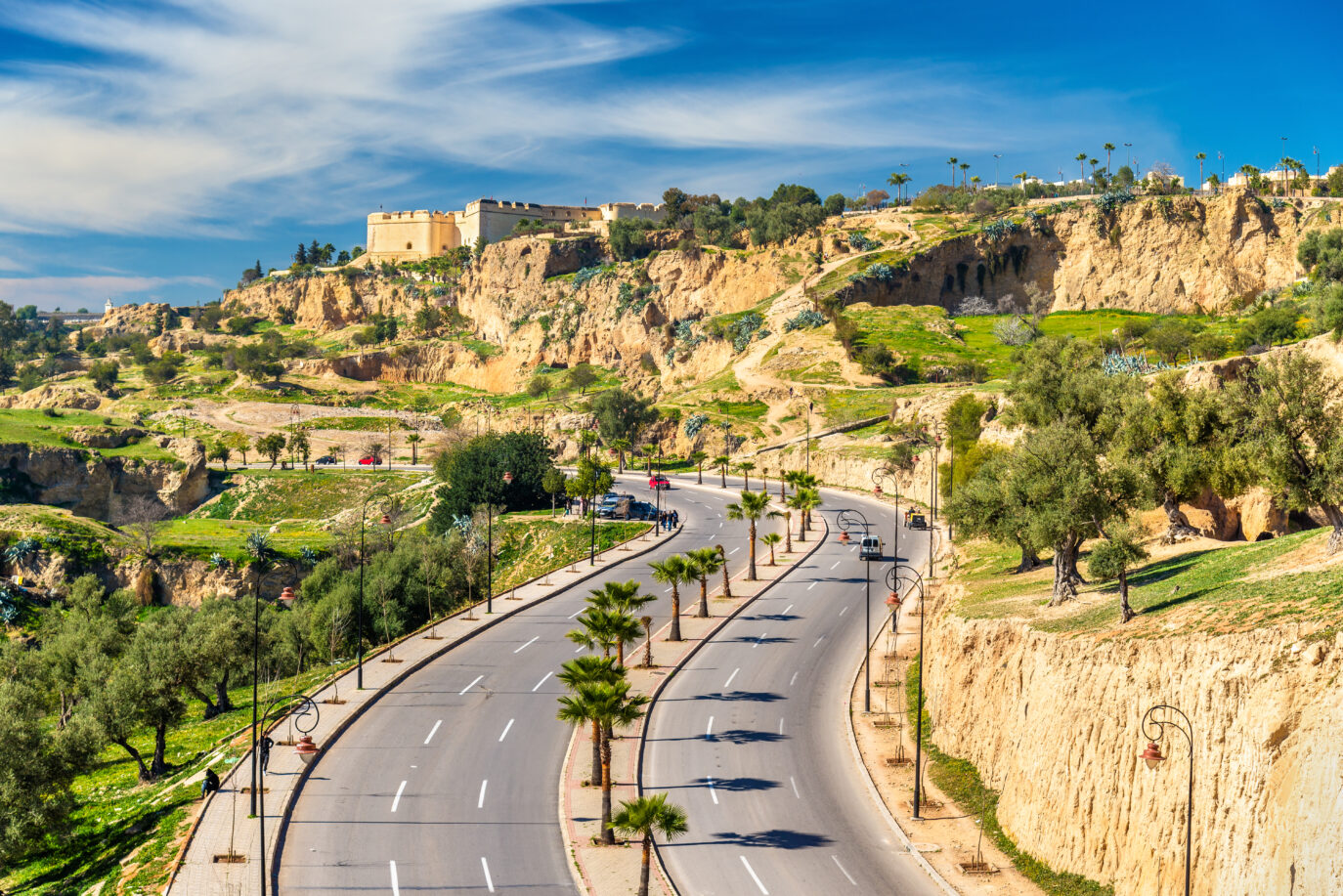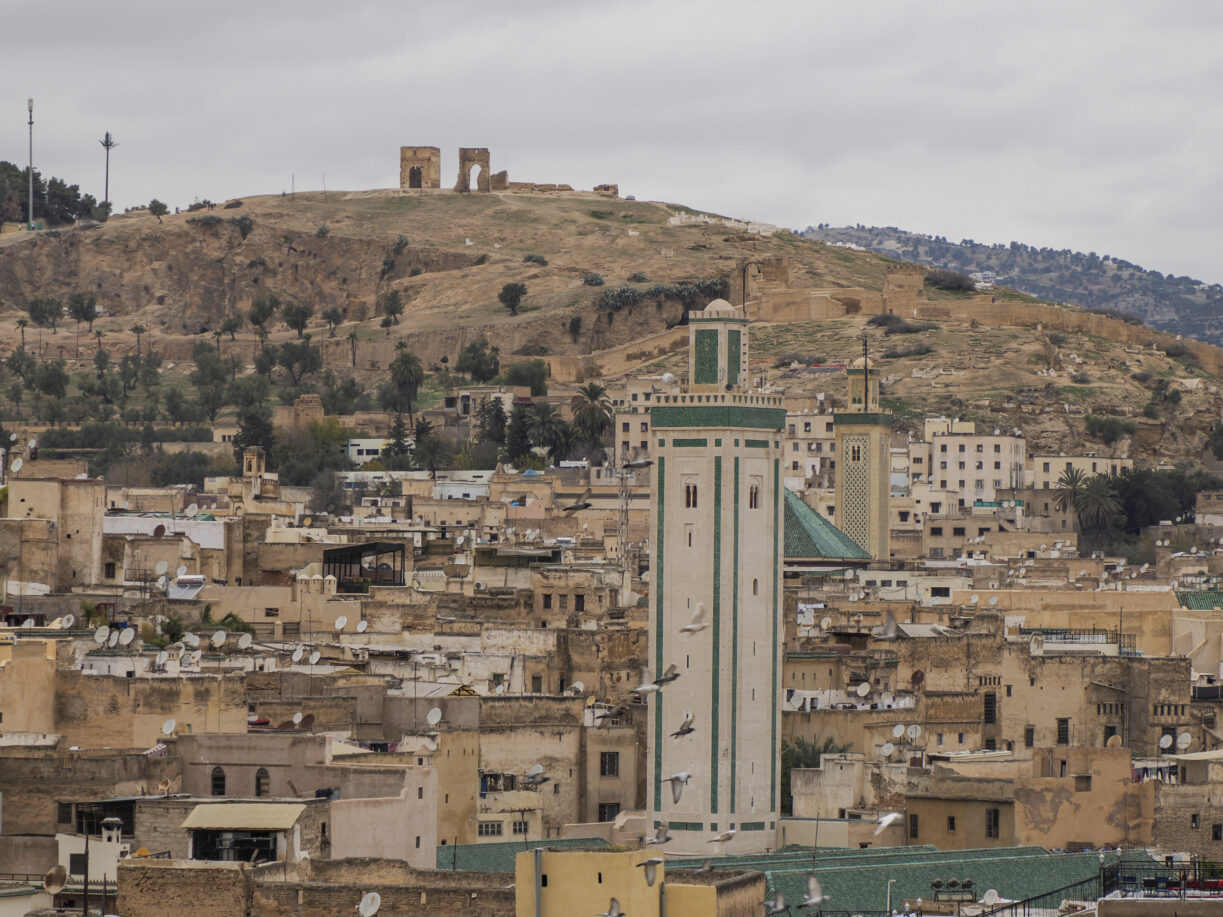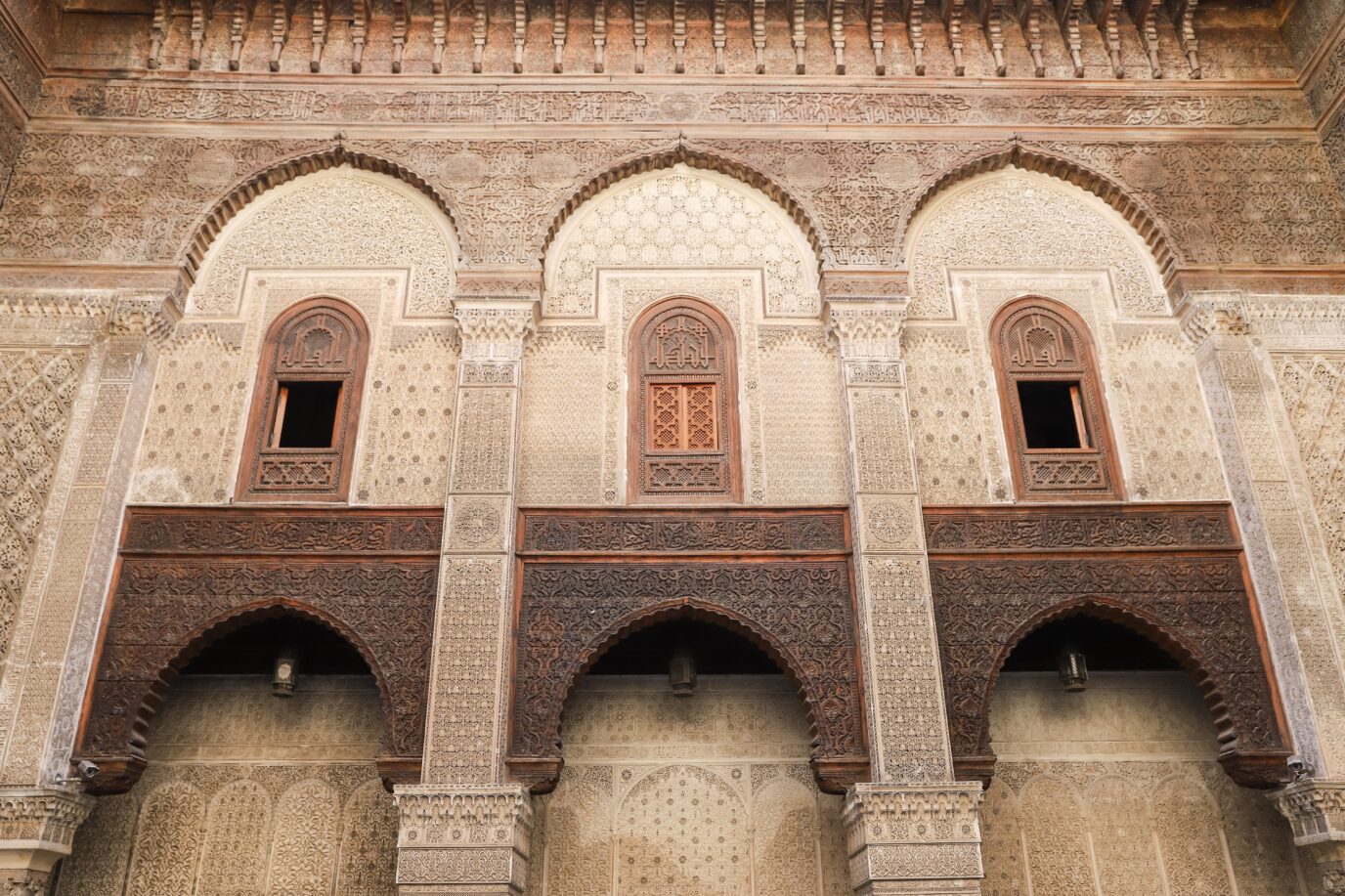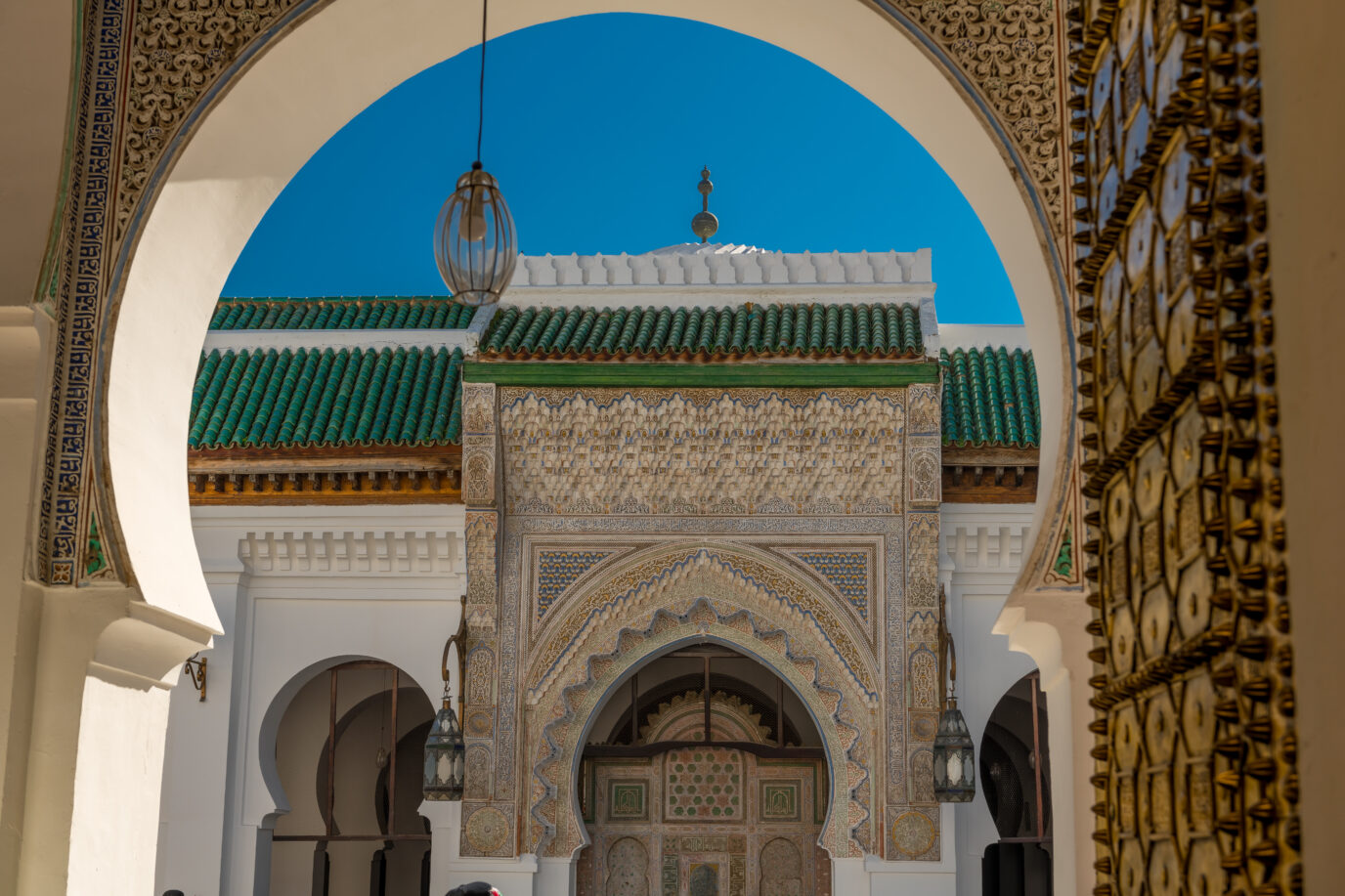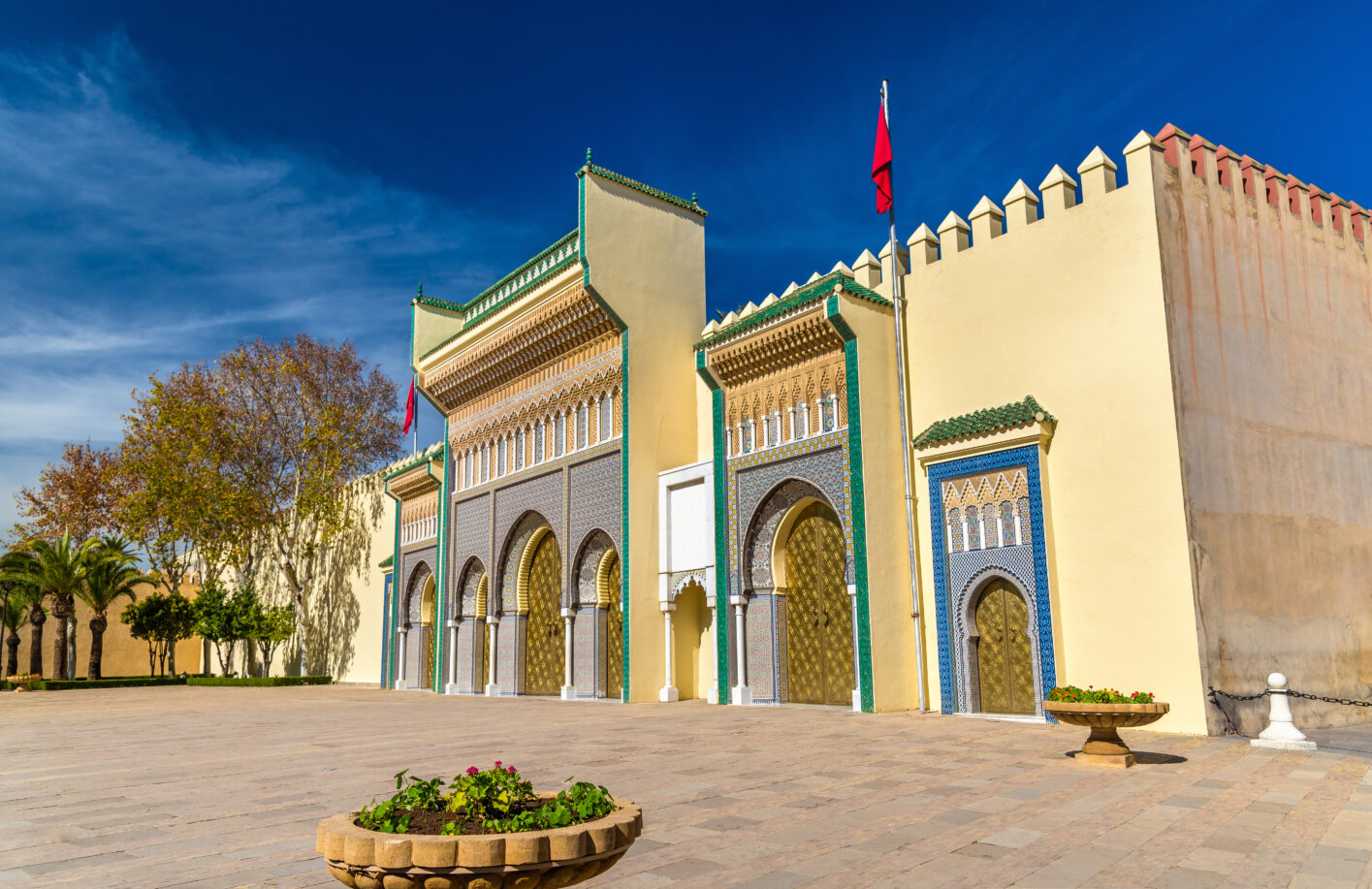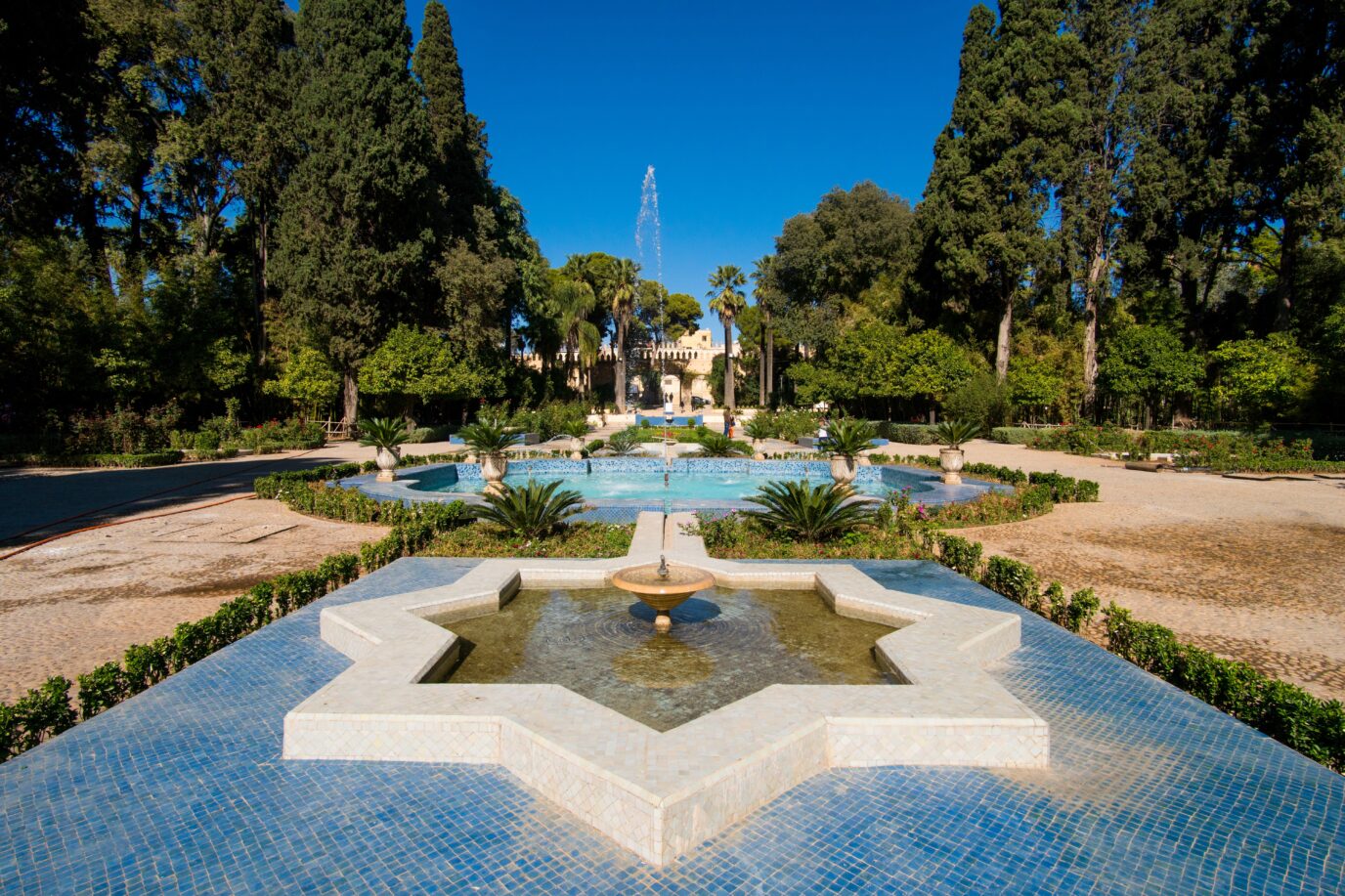Fez, a city in Morocco, is renowned for its walled old town, often likened to Jerusalem. Visitors can explore its historical richness today. Established around the 8th century, it was Morocco’s inaugural imperial city, boasting considerable antiquity. Additionally, it played a pivotal role in establishing Islamic worship in the country and hosts one of its oldest universities. Understanding its significance is paramount. These distinctions render Fes, as it’s commonly called, a captivating city with a vibrant and indispensable cultural heritage. Indeed, it is celebrated as Morocco’s cultural and spiritual nucleus, as well as a prominent hub of art and science.
Fez
Fez is one of the most exciting and beautiful places in the country. Still, Casablanca, Marrakech, and Rabat are some of the country’s bigger cities. It doesn’t matter that Fes has been able to adapt to modern life because it still has its traditions and an authentic Moroccan way of life that is all over its streets.
We can walk through the city’s narrow streets and get lost in the fantastic architecture part of everyday life. It has adobe and brick walls, patios of different heights, pillars with tiles, etc.
Although we could label the Medina as the ‘human wonder’ of Fez, it is not the only one. Although we could call Medina Fez’s “human wonder,” it is not the only one. The blue color is attractive, and the cobalt color is a symbol of Moroccan pottery, where some of the country’s most beautiful pieces of porcelain are produced or made. Its streets are also characterized by the nature of a maze, which increases beauty and mystery.
Fez, in Morocco, is the union of three cities that lie on the banks of the Fez and Zitu rivers.
Why Visit Fez ?
Fez is one of the oldest and most cultural towns in Morocco. It is also a UNESCO World Heritage site, known for its long history, beautiful architecture, and lively medina. The streets of the Fes el-Bali area are like a maze, and they are home to historic sites like the Al-Qarawiyyin University, the oldest school in the world still in use.
The city is also known for its ancient crafts, such as textiles, leatherworking, and pottery. There is a unique mix of old traditions and new influences in Fez, which makes it an important place to visit for anyone interested in Morocco’s rich cultural history.
Moroccan food is also very popular in Fez. You can find many traditional meals that show off the region’s rich flavors. Food fans can enjoy the city’s delicious dishes, like the famous pastilla, tagine, and mekouda while enjoying its lively atmosphere. You can get a real taste of Moroccan culture in the souks, which are the local shops. They are full of spices, fresh food, and street food.
Top Attractions in Fez
Fez el Bali
The Medina of Fez el-Bali, a Moorish city from the 9th century, is Morocco’s best-preserved and most significant living monument. It is a maze of more than 9,000 alleys. Also, it is the world’s most crucial city area without cars. Instead, things are moved by donkeys, carriages, and motorcycles. The streets are like a maze, so it can be hard to find your way around. To find the city’s secret gems, hiring an official guide is best.
Fez el Jedid (Yedid)
Created in the 13th century by the Merinids, it quickly became the seat of royal power. This part of the city hides a dense urban fabric where the Jewish quarter (Mellah) and the Royal Palace are located, as lively souks and craft shops are. The highlight here is to visit the Royal Palace (only from the outside, as it is forbidden to enter), walk the alleys of the Jewish quarter, and see its synagogue and the Jewish cemetery. The Jewish quarter is worth visiting because it has an architectural style different from the rest of the city.
La Ville Nouvelle
The new city, or Ville Nouvelle de Fez, was founded by the French in 1920. This part of the city maintains a European architectural style, being the opposite pole of the Medina. It houses administrative services as well as westernized hotels. The Bank of Morocco and Florence square are also located here. The wide avenues are lined with trendy shops, and the traffic is hectic and chaotic. Of the attractions to visit in Fez, there are practically none. But if you are interested in staying in westernized hotels, this is the place to do it. Being the new part of the city, we can walk to its bars, cafes, and modern-style terraces and take advantage of a good mint tea.
Chahrij Bouinania
Other interesting constructions in Fez are the many madrasas (Koranic schools), such as Chahrij Bouinania. It’s a wall clock with a chime from 1357; it was built in 1300. It had beautiful examples of Meriní plasterwork and wood from three dynasties between the 13th and 17th centuries. It is also full of examples of Meriní handicrafts and offers fantastic views of the old city from its rooftop.
Karaouine Mosque
The Karaouine Mosque is one of the holiest places in Fez and Morocco. It is the second-largest mosque in the country. Its tower is the oldest Islamic building in the city; it was built in 956. The mosque is hidden deep in the Medina, and because it is near shops and homes, it’s hard to understand how big it is. It has room for 20,000 people to pray every day. The mosque has one of the largest and most important libraries in the world. Still, non-Muslims are not allowed to enter because it is a holy place.
Museum
There are three fascinating museums in Fez: the Museum of Nejarine Arts and Wood Crafts, the Museum of Moroccan Art (Batha), and the Museum of Weapons (Bordj Nord). These museums are a nice break from the busy streets. Also, the Henna Souq is known for its beautiful henna tattoos on women’s legs and arms. The Museum above Batha and the traditional Jewish community quarter are two of the most impressive buildings in Fez el-Jdid, right next to the old city.
The Merenides Tombs
They are outside the walls of old Fez and can be seen from most rooftops and rooftops in the city. The tombs are close to Hotel Merin. They have great views of the Medina and the city and the hills full of olive trees surrounding the town. Good places to take pictures can be dangerous to opportunists.
The Mausoleum of Moulay Idriss mosque
Houses in the city’s heart are the tomb of the founder of Fes, its Patron Saint. It is a holy place generated by the city’s inhabitants and pilgrims from different regions. The building restores by the Alawite Sultan Moulay Ismail, who adorned it with a beautiful pyramidal dome. The entrance is only allowed to Muslims, but it is worth looking from the door. The mosque is next to the Kbira Talaa near the Souk Attarine.
The Mellah (Jewish Quarter)
The Mellah, Fez’s Jewish area, is the city’s oldest planned neighborhood. It was built in 1438. The newly restored IBN Dayan Synagogue from the 17th century and the Jewish cemetery with its white tombs and beautiful views are open to visitors. The area has narrow streets, balconies, and wooden parts of the buildings. The best way to learn about the area’s long past is to go on a guided tour.
Royal Palace
This list of what to visit in Fez differs from the Royal Palace; it can only be seen outside. But it is worth the trip here. It is located in the Plaza des Alaouites and stands out for its majestic golden doors. This construction comprises a Meraní madrasa, gardens, and parade ground.
Jnan Sbil Garden
Suppose you have some time to walk and relax. In that case, we recommend visiting this beautiful garden, famous in Fez for its variety of species and hydraulic infrastructure.
Where to Stay in Fez
Riad Fez
A traditional, high-end riad that gives you an authentic Moroccan experience with beautiful buildings and excellent service.
Palais Faraj Suites & Spa
This five-star hotel combines old-world charm with modern comfort. It is close to the Medina and offers stunning views of Fez.
Hotel Sahrai
It is a modern hotel with a classy look known for its high-end services, lovely gardens, and rooftop pool.
Dar Bensouda
This charming riad is right in the middle of the Medina and has a warm, friendly vibe. It’s a great place to relax after visiting the city.
Exploring the Culture of Fez
Local Culture: Fez is famous for its long history and traditional crafts. The Medina, in particular, gives visitors a look into hundreds of years-old ways of life.
Food: Tagine, couscous, and pastilla are some of the city’s most famous Moroccan dishes. You can also get tasty grilled kebabs and traditional sweets on the street.
Music: Fez has a deep musical heritage, with genres like Andalusian classical music and Gnawa music reflecting the city’s cultural fusion.
Clothing: People often wear traditional Moroccan clothes, such as the djellaba (a long dress) and the fez (a hat that gave the city its name), especially in religious and cultural settings.
Things to Do in Fez
Look Around the Medina of Fez (Fez el-Bali)
This UNESCO World Heritage site is one of the most significant urban areas in the world, and it doesn’t allow cars. You can walk through the narrow streets and traditional markets (souks).
See the Royal Palace and Fez el-Jdid
Take a walk around Fez el-Jdid’s impressive Royal Palace, which has lovely gardens and gates. Then, check out the area’s charming streets and souks.
In Fez’s Souks, you can shop
You can buy everything from spices to hand-woven fabrics, ceramics, jewelry, and leather goods in the busy souks. This is the real way to shop in Morocco.
Check out the Mellah, or Jewish Quarter
You can walk through the ancient Jewish quarter, which has narrow streets, the Ibn Danan Synagogue, and a Jewish cemetery with a view of the whole city.
By Plane
The main airport serving Fez is Fès–Saïs Airport. It’s about 14 km from the city center and serves trips in and out of the country. Getting from the airport to the city is easy; you can take a car or a shuttle bus.
By Train
The National Office of Railways (ONCF) runs trains from Fez to Casablanca, Rabat, and Marrakech, among other big towns. The Fez train stop is easy to reach from other places, and the ride is comfortable and beautiful.
By bus
Several bus companies, including CTM and Supratours, offer long-distance travel to and from Fez. A cheap choice is to take a bus, which leaves from many cities in Morocco.
By Car
Renting a car is convenient if you’re coming from a nearby city. Highways link Fez to other cities, and driving allows you to see more of the area.
By Taxi
You can taxi to Fez even if you’re not in a nearby city. It’s faster and easier to use compared to buses.

